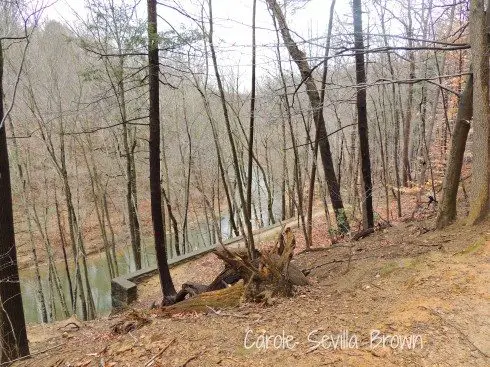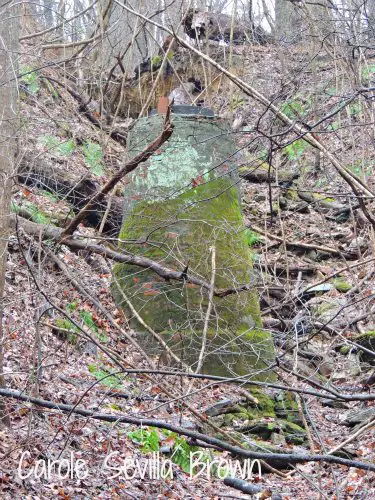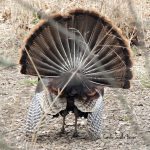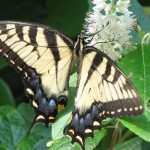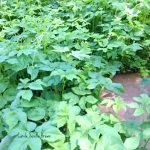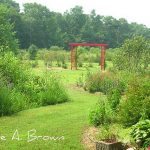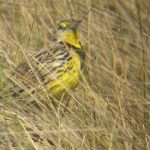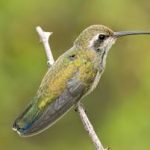It was a gray and foggy day….as we set out to participate in the 27th Annual Philadelphia Mid-Winter Bird Census in our assigned location in the Wissahickon Park.
Now the Wissahiccon is of so remarkable a loveliness that, were it flowing in England, it would be the theme of every bard, and the common topic of every tongue, if, indeed, its banks were not parcelled off in lots, at an exorbitant price, as building-sites for the villas of the opulent. Yet it is only within a very few years that any one has more than heard of the Wissahiccon […] the brook is narrow. Its banks are generally, indeed almost universally, precipitous, and consist of high hills, clothed with noble shrubbery near the water, and crowned at a greater elevation, with some of the most magnificent forest trees of America, among which stands conspicuous the liriodendron tulipiferum. The immediate shores, however, are of granite, sharply defined or moss-covered, against which the pellucid water lolls in its gentle flow, as the blue waves of the Mediterranean upon the steps of her palaces of marble….~ Edgar Allen Poe, Morning on the Wissahiccon
Sadly, because of the weather there weren’t many birds to be seen, but I’m a pretty good ear birder so was able to catch the calls of the expected birds: Robins, Cardinals, Blue Jays, Crows, Golden-crowned Kinglets, White-breasted and Red-breasted Nuthatches, Chickadees, Tufted Titmouse, Song Sparrow, White-throated Sparrow, and a gorgeous Sharp-Shinned Hawk who flew low right over our heads. (Other birders participating in the census did record a lot more species)
But we were determined to do our part, so we spent 4 hours climbing the rocks and hiking the trails in the Wissahickon Gorge, and discovered many mysteries, both natural and man-made.
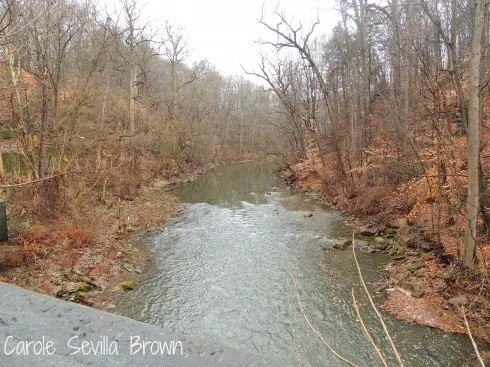
Wissahickon Creek
Wissahickon means “catfish creek” in the Lenape language of the original native inhabitants of this land, also known as the Delaware Indians.
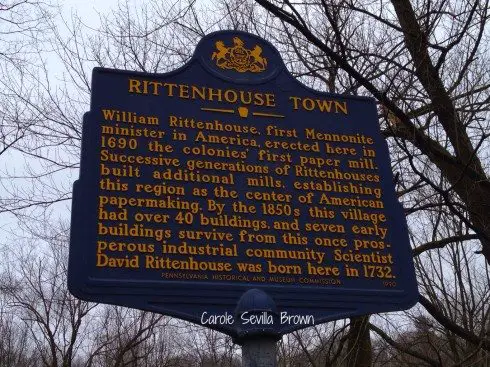
Rittenhouse Town marker
We began our day at historic Rittenhouse Town, established in 1690 and site of the first paper mill in the new colonies.
A Paper-Mill near German-Town doth stand,
So that the Flax, which first springs from the Land,
First Flax, then Yarn, and then they must begin
To weave the same, which they took pains to spin.
Also, when on our backs it is well worn,
Some of the same remains Ragged and Torn;
Then of the Rags our Paper is made,
Which in process of time dost waste and fade:
So, what comes from the Earth, appeareth plain,
The same in Time, returns to Earth again.
~Richard Frame, 1692.
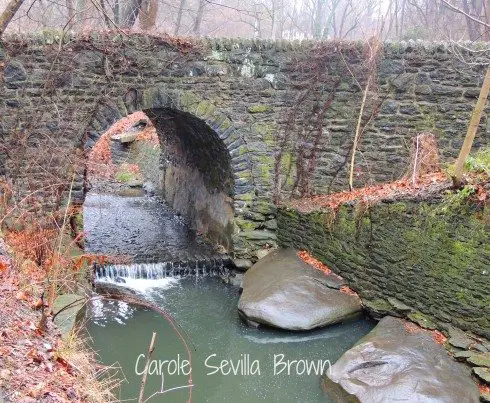
Monoshone Creek, Rittenhouse Town, PA
This small town was built at the confluence of the Monoshone and Wissahickon Creeks, which flow into the Schuylkill River, and eventually into the Delaware River.
Although only 7 of the original homes and buildings remain, there was at one time more than 40 buildings in Rittenhouse Town.
Personally, the sight of a home built over 300 years ago juxtaposed with the very modern air conditioner compressor outside is just very strange and out of place!
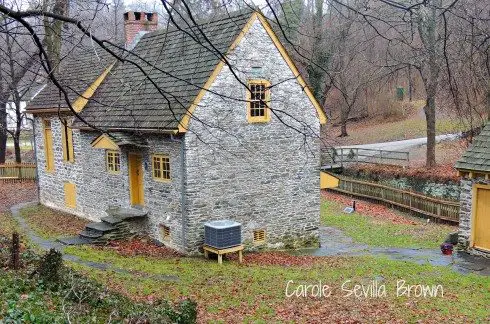
Rittenhouse Homestead, Rittenhouse Town, Philadelphia, PA
We continued along the trails which parallel the Monoshone Creek down to Forbidden Drive, so called because automobile traffic has been banned on this road since it was built in 1869 so that the wilderness feel of this park would be protected.
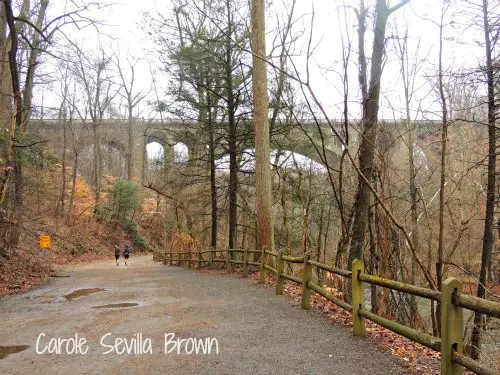
Henry Ave Bridge, Wissahickon Creek
Benjamin Franklin recognized the importance of this watershed for protecting a clean water supply for the city of Philadelphia, and urged the city to purchase this land. It was not until 1869, that the city did buy this 1800 acre section of the Wissahickon Valley, and added it to Fairmount Park, a 10,500-acre park system, and the largest municipally operated landscaped park system in the United States.
The land was purchased because so many industries had been built along this creek and it’s waters had become extremely toxic and polluted. The city razed the mills, and restored the land to wilderness because at that time the romantic notion of the value of wild nature had swept the country.
Thankfully, this land has been protected ever since!
The Wissahickon Park is an interesting mix of wild place and surprising elements that remind you that people lived here, built homes and businesses here, and now hold recreational activities here.
Now let’s look at some mysteries.
Mystery 1: Identify Trees by Their Bark
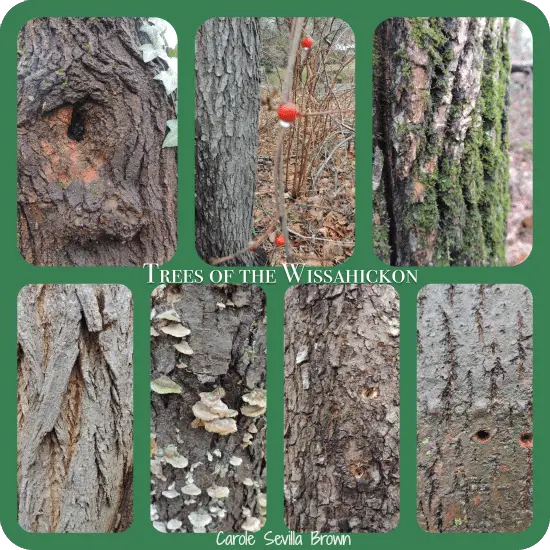
Can you identify trees just by looking at the bark?
Wissahickon Schist
As you walk the trails next to this creek, you see the rock formations that created the Wissahickon Gorge. In fact, this area is quite well know for its rocks. Wissahickon Schist is the primary building material for a large majority of homes in the Philadelphia area, including the foundation of my own home, built in 1913.
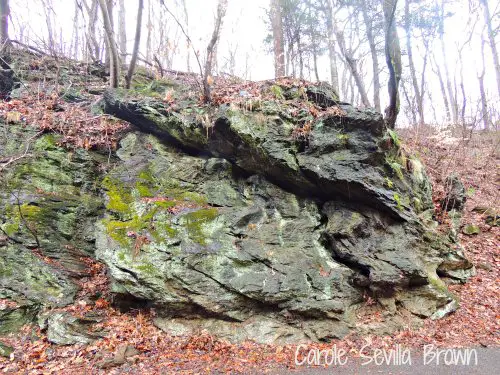
Wissahickon Schist
Mystery 2: Who Built the Dry Stone Wall to Support This Rock Formation?
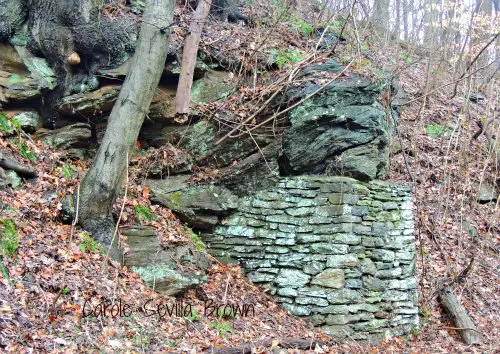
Mystery — Who built the dry stone wall to hold up these rocks?
The trees grow right out of this rock
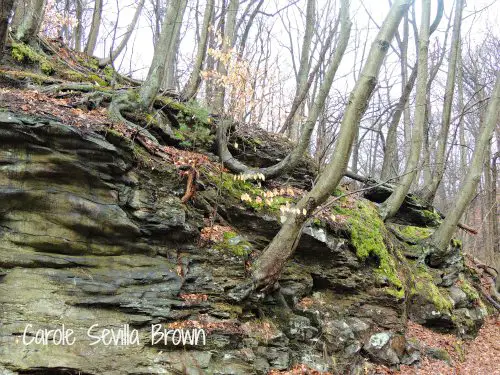
Trees Grow Out of Wissahickon Schist
In fact, when the tree falls over, you can see how shallow-rooted they are because of the rocks, and how many pieces of rock are entwined in their roots.
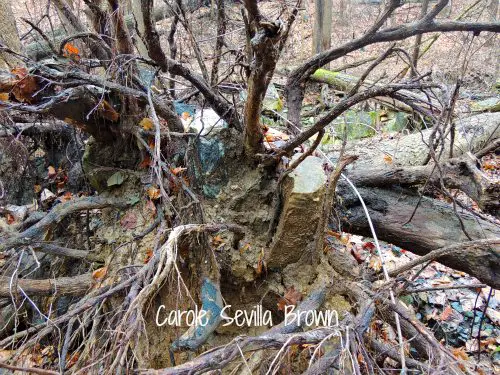
Mystery 3: Why didn’t these trees lose their leaves by January?
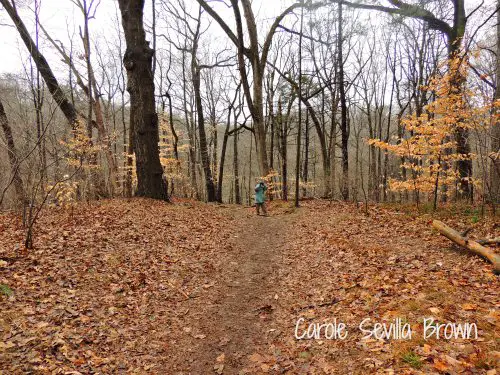
And what kind of tree is it that still has its leaves?
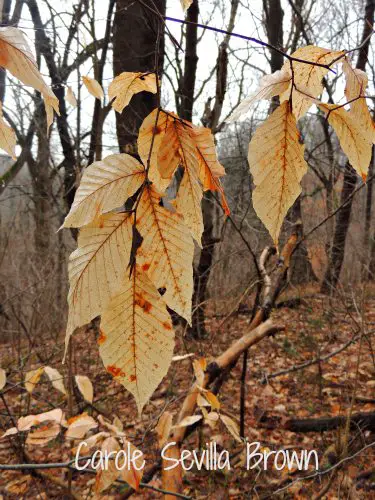
Mystery 4: What’s this Black stuff?
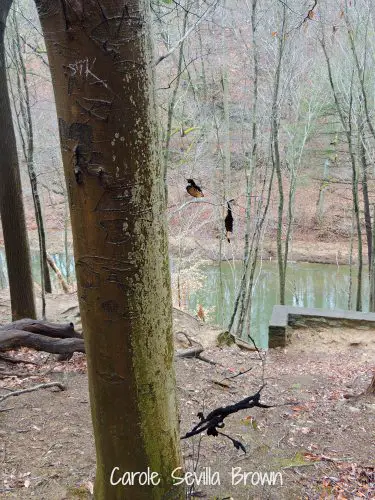
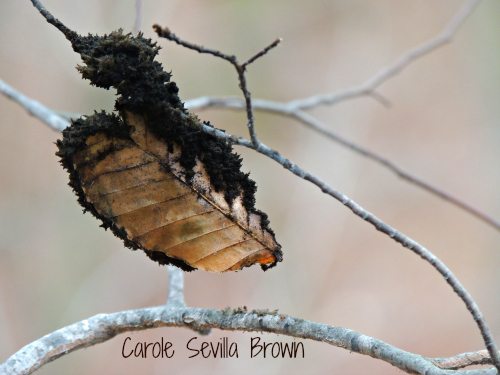
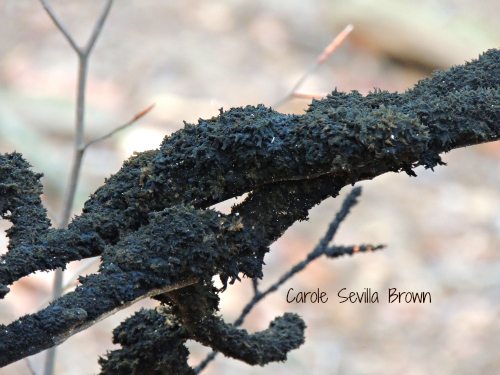
Want to know what this Black Stuff is? I solved the mystery in Exploring the Wissahickon.
Mystery 5? What’s This structure for? 
It’s an odd feeling as you walk in these woods and climb the rocky trails to come upon abandoned human-made structures. They seem so out of place, but a reminder of the long history hidden among the trees.
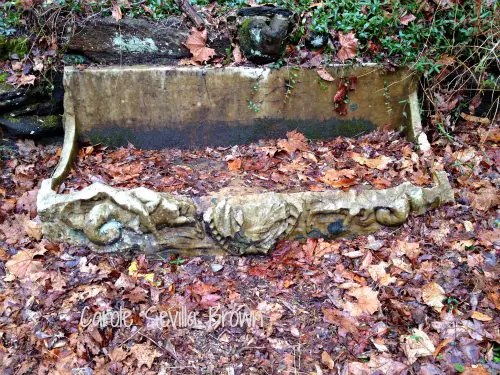
Fun Fungi
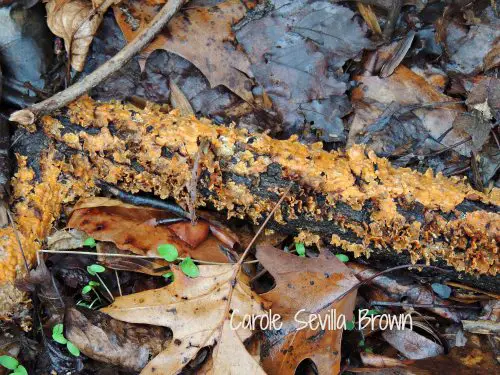
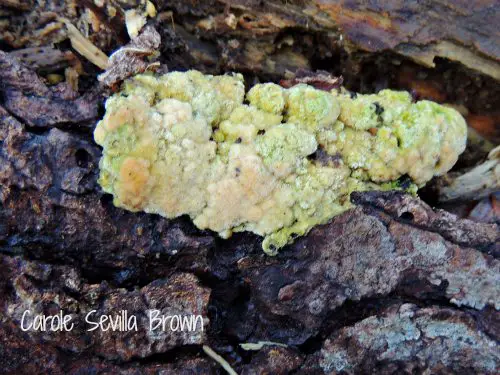
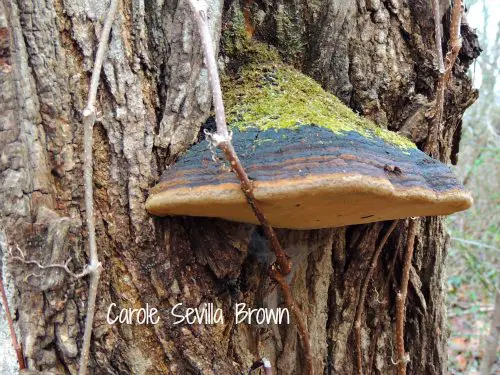
I hope you’ve enjoyed following my walk along the Wissahickon! What are you enjoying in nature lately?
More From Ecosystem Gardening:
Submit your review | |

